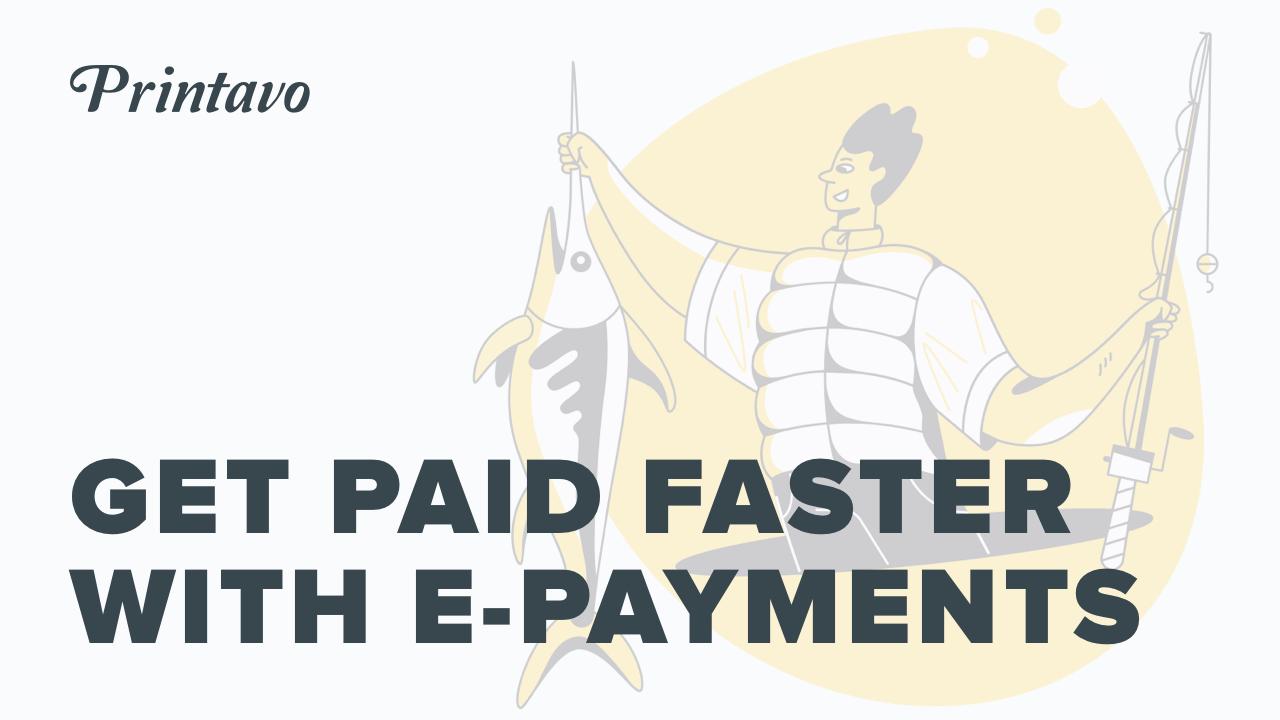Can your customers pay online?
In 2019, people are accustomed to paying with a credit card at the time of purchase; they’ve been trained to expect it by Amazon, Uber and online retail.
In this post, we’ll discuss the pros and cons of using payment processors. I’ll also tell about the four payment processors supported by Printavo and show the differences between them.
This post does not tell you how to set them up–because it doesn’t need to! That’s happens in your Printavo account, and it’s as easy as copying and pasting a number. (The click path to set up payments is in Printavo is: Login > My Account > Payment Processors for instructions)
Pros and Cons of E-payments
The pros of e-payments are obvious: the ease and flexibility of collecting money online. You can:
- Request the entire balance from your customer before you complete the job.
- Know your books are always balanced because you’re getting payment upfront.
- Avoid fronting the cost of materials on jobs.
- Let your customer can pay at their convenience when they receive your email asking your payment.
- Streamline your payment collection process and avoid lost invoices.
Basically, a good e-payments system turns you into Amazon. Your customers pay online, then the money deposits into your bank account. It’s more convenient for you and the customer.
The con of e-payments is processing fees.
These fees are charged by processors to keep the payment info encrypted, develop integrations for apps like Printavo, and maintain infrastructure to facilitate the transfer of funds.
Payment processing costs are becoming harder to avoid.
Some shops only accept cash or check, but this limits their ability to collect the money they’re owned in a timely matter. In the section below, I’ll explain how to make sure you’re getting the best processing rate and why this cost of doing business actually affords you perks that mitigate processing costs.
Printavo’s Payment Processors
Printavo offers embedded payments via ACH and major credit cards. Sign up via the Accept Payments page in Printavo.
Paypal
Paypal was one of the first online payment processors, and it’s certainly the one that’s lasted longest. They’ve set the industry standards and are trusted by online consumers and retailers around the world.
There’s a variety of types of Paypal processing. Printavo pairs with accounts that have API keys obtained via the instructions inside your Printavo account.
If you enable Paypal as your processor of choice in Printavo, customers can pay with a credit card as well as their Paypal balance.
Paypal offers businesses loans that can be repaid by accruing the processing fees (in other words, getting your customers to use Paypal)–a shop told me about using a Paypal loan to upgrade their curing dryer.
There is one slight drawback to Paypal in the custom decorating space: Paypal insures purchases. That’s great for consumers who want to buy something from an online seller they’ve never interacted with before. But if a consumer wants to commit fraud, they can easily appeal to Paypal and claim they didn’t receive their goods.
You’d then contact Paypal support to show your receipts and invoices. I’ve heard about this kind of fraud only a handful of times, but it’s enough that I should mention it.
If you have a Paypal account, check the fine print and processing fees. We’ve found that Paypal’s average processing fees are around 3.5%.
Square
Lastly, we pair with Square card readers and terminals.
This is an important integration for Printavo. But it has one important limitation to note: a customer must physically present you with their card and be swiped with the Square card reader to take payments through Printavo.
If you want a point-of-sale (POS) system for running cards in your shop, Square’s a great choice for that!
If you want to send e-payments through Printavo, you need to enable one of the other three processors.
Note: You can have Square and another processor active at the same time. Square’s processing fees can be anywhere between 3-3-4% depending on criteria outlined in Square’s terms of service.
Conclusion
So which should you choose?
It boils down to which gets you the lowest rate.
Pick that one!
Or pick the one that integrates with your financials best. Remember: you can legally charge a card fee to your customer in most US states.
Likewise, payment processors calculate their rates on an account-by-account basis.
As you process more transactions with these companies, you can negotiate a lower rate of processing. Once you’ve processed tens of thousands of dollars and established your relationship, be sure to call customer service to see what their negotiation milestones look like (i.e. how much you have to process before they’ll lower your rate).
Using e-payments to take payments online with Printavo lets you automate crucial payment actions, collect payment faster, and get paid before you print the job or order goods. It makes the Printavo platform a core part of your business.
If you have questions about which payment processor to choose, don’t hesitate to leave a comment below or shoot us an email!


0 Comments